-
 Bitcoin
Bitcoin $107,443.3008
-1.17% -
 Ethereum
Ethereum $2,494.2503
-0.63% -
 Tether USDt
Tether USDt $1.0003
0.00% -
 XRP
XRP $2.2496
2.23% -
 BNB
BNB $658.7569
0.63% -
 Solana
Solana $154.9826
1.94% -
 USDC
USDC $1.0000
0.01% -
 TRON
TRON $0.2799
1.07% -
 Dogecoin
Dogecoin $0.1659
-1.78% -
 Cardano
Cardano $0.5745
0.25% -
 Hyperliquid
Hyperliquid $39.7005
0.13% -
 Bitcoin Cash
Bitcoin Cash $519.5989
3.78% -
 Sui
Sui $2.7874
-2.40% -
 Chainlink
Chainlink $13.3762
-1.69% -
 UNUS SED LEO
UNUS SED LEO $9.0784
-0.64% -
 Avalanche
Avalanche $17.9846
-2.81% -
 Stellar
Stellar $0.2390
-0.06% -
 Toncoin
Toncoin $2.9028
0.25% -
 Shiba Inu
Shiba Inu $0.0...01147
-2.17% -
 Litecoin
Litecoin $86.6956
-1.27% -
 Hedera
Hedera $0.1508
-0.50% -
 Monero
Monero $322.6222
3.26% -
 Polkadot
Polkadot $3.4124
-2.99% -
 Dai
Dai $0.9999
0.00% -
 Bitget Token
Bitget Token $4.5434
-1.97% -
 Ethena USDe
Ethena USDe $1.0002
0.00% -
 Uniswap
Uniswap $7.1562
-2.61% -
 Aave
Aave $275.8830
-1.02% -
 Pepe
Pepe $0.0...09790
-4.04% -
 Pi
Pi $0.5018
-5.09%
What is the difference between Bitcoin mining and Bitcoin mining? What is the uniqueness of Bitcoin mining?
DOGE mining uses Scrypt, has a 1-minute block time, and a fixed 10,000 DOGE reward, making it more accessible and dynamic than Bitcoin mining with SHA-256 and 10-minute blocks.
May 04, 2025 at 11:00 pm
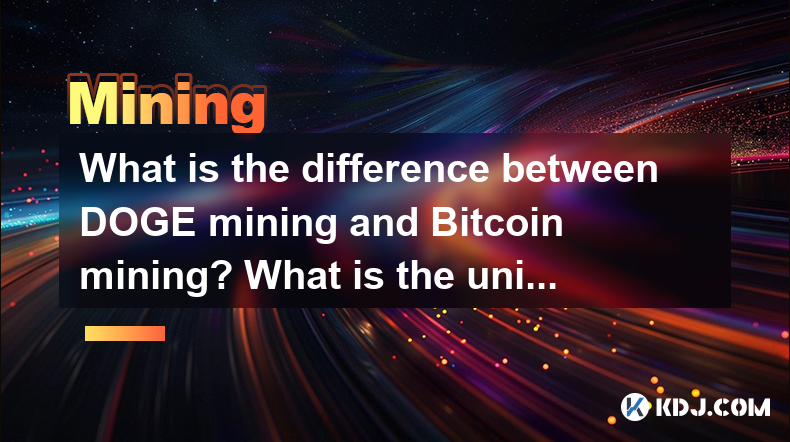
Mining in the cryptocurrency world is a crucial process that not only validates transactions but also introduces new coins into circulation. When discussing DOGE mining and Bitcoin mining, it's important to understand the key differences between these two, as well as the unique aspects that make DOGE mining stand out.
Overview of Bitcoin Mining
Bitcoin mining is the process by which new bitcoins are created and transactions are added to the Bitcoin blockchain. Miners use powerful computers to solve complex mathematical problems, which, once solved, allow them to add a block of transactions to the blockchain. In return for their efforts, miners are rewarded with newly minted bitcoins and transaction fees.
Bitcoin uses a Proof of Work (PoW) consensus mechanism, which requires significant computational power. The mining difficulty adjusts approximately every two weeks to ensure that new blocks are added to the blockchain roughly every 10 minutes. This difficulty adjustment is crucial for maintaining the network's stability and security.
Overview of DOGE Mining
DOGE mining, on the other hand, is the process of mining Dogecoin, a cryptocurrency that started as a meme but has grown into a significant player in the crypto space. Like Bitcoin, Dogecoin uses the Proof of Work (PoW) consensus mechanism, but it is based on the Scrypt algorithm, which is different from Bitcoin's SHA-256 algorithm.
Dogecoin's mining process is designed to be more accessible to the average user. The mining difficulty adjusts after every block, which is mined approximately every minute. This faster block time and more frequent difficulty adjustments make Dogecoin mining more dynamic and responsive to changes in the network's hash rate.
Differences in Mining Algorithms
One of the primary differences between DOGE mining and Bitcoin mining lies in the algorithms used. Bitcoin uses the SHA-256 algorithm, which is known for its high computational requirements. This has led to the development of specialized hardware known as ASICs (Application-Specific Integrated Circuits), which are designed specifically for Bitcoin mining.
In contrast, Dogecoin uses the Scrypt algorithm, which was initially designed to be more resistant to ASIC mining. Scrypt requires more memory than SHA-256, making it more suitable for CPU and GPU mining. However, over time, ASICs for Scrypt have also been developed, though they are less prevalent than those for SHA-256.
Differences in Block Time and Reward Structure
Another significant difference between DOGE mining and Bitcoin mining is the block time and reward structure. Bitcoin has a block time of approximately 10 minutes, and the block reward halves approximately every four years, starting with 50 BTC and currently at 6.25 BTC per block.
Dogecoin, on the other hand, has a block time of about one minute, and the block reward is fixed at 10,000 DOGE per block. This faster block time and consistent reward structure make Dogecoin mining more predictable and potentially more attractive to miners looking for steady returns.
Differences in Mining Difficulty Adjustment
The mining difficulty adjustment mechanism also differs between DOGE and Bitcoin. Bitcoin's difficulty adjusts every 2016 blocks, which is roughly every two weeks. This adjustment is designed to maintain a consistent block time despite changes in the network's total hash rate.
Dogecoin's difficulty adjusts after every block, which is a more frequent adjustment compared to Bitcoin. This allows Dogecoin to respond more quickly to changes in the network's hash rate, making it more resilient to sudden increases or decreases in mining power.
Uniqueness of DOGE Mining
The uniqueness of DOGE mining lies in several key aspects that set it apart from other cryptocurrencies, including Bitcoin. Firstly, Dogecoin's community-driven nature has fostered a unique mining culture. The Dogecoin community is known for its friendly and supportive environment, which encourages more people to participate in mining.
Secondly, Dogecoin's lower entry barrier for mining is a significant factor. The use of the Scrypt algorithm and the ability to mine with CPUs and GPUs make it more accessible to individuals without specialized hardware. This democratization of mining has helped Dogecoin maintain a diverse and decentralized network of miners.
Thirdly, Dogecoin's faster block time and more frequent difficulty adjustments contribute to its uniqueness. These features make Dogecoin mining more dynamic and responsive, which can be appealing to miners looking for a more interactive mining experience.
Lastly, Dogecoin's fixed block reward of 10,000 DOGE per block provides a predictable income stream for miners. Unlike Bitcoin, where the block reward halves over time, Dogecoin's consistent reward structure offers stability and reliability, which can be attractive to miners seeking steady returns.
Frequently Asked Questions
Q: Can I mine Dogecoin with the same hardware used for Bitcoin mining?
A: While it is technically possible to mine Dogecoin with Bitcoin mining hardware, it is not the most efficient approach. Bitcoin mining typically uses ASICs designed for the SHA-256 algorithm, whereas Dogecoin uses the Scrypt algorithm. For optimal performance, it is better to use hardware specifically designed for Scrypt mining, such as GPUs or Scrypt ASICs.
Q: Is Dogecoin mining more profitable than Bitcoin mining?
A: Profitability in mining depends on various factors, including the cost of electricity, the efficiency of the mining hardware, and the current market price of the cryptocurrency. Dogecoin mining can be more accessible and potentially more profitable for individuals with less powerful hardware due to its lower entry barrier. However, Bitcoin mining can be more lucrative for those with access to high-performance ASICs and low electricity costs.
Q: How does the community aspect of Dogecoin affect its mining?
A: The Dogecoin community plays a significant role in its mining ecosystem. The friendly and supportive nature of the community encourages more people to participate in mining, which helps maintain a decentralized and diverse network of miners. This community-driven approach can lead to a more stable and resilient mining network compared to other cryptocurrencies.
Q: What are the environmental impacts of DOGE mining compared to Bitcoin mining?
A: Both DOGE and Bitcoin mining have environmental impacts due to their energy consumption. However, Dogecoin's use of the Scrypt algorithm and its lower entry barrier for mining can lead to a more diverse range of mining hardware, including more energy-efficient GPUs. In contrast, Bitcoin mining is dominated by energy-intensive ASICs. While both contribute to energy consumption, the diversity in Dogecoin mining hardware might result in a slightly lower environmental impact per unit of mining power.
Disclaimer:info@kdj.com
The information provided is not trading advice. kdj.com does not assume any responsibility for any investments made based on the information provided in this article. Cryptocurrencies are highly volatile and it is highly recommended that you invest with caution after thorough research!
If you believe that the content used on this website infringes your copyright, please contact us immediately (info@kdj.com) and we will delete it promptly.
- North Korea's Cyber Plot: Funding Weapons Development Through Virtual Heists
- 2025-07-01 10:30:12
- Undervalued Crypto Tokens: Compute Tokens Stealing the Show?
- 2025-07-01 10:50:12
- XRPL EVM Sidechain: Unleashing Smart Contracts and Cross-Chain DeFi on XRP
- 2025-07-01 10:30:12
- Archaeology Unearths Ancient Coin Moulds: A Glimpse into Indo-Greek Trade in Gujarat
- 2025-07-01 10:50:12
- MAGACOIN FINANCE: Altcoin Returns & the Early Adoption Advantage
- 2025-07-01 11:10:12
- Neo Pepe: Is This Presale the Crypto Opportunity You've Been Waiting For?
- 2025-07-01 11:10:12
Related knowledge
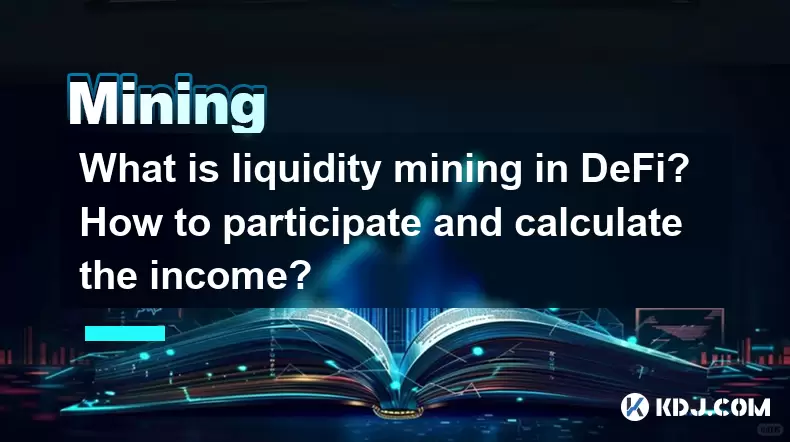
What is liquidity mining in DeFi? How to participate and calculate the income?
Jun 20,2025 at 03:21pm
Understanding Liquidity Mining in DeFiLiquidity mining is a core concept in the decentralized finance (DeFi) ecosystem that allows users to earn rewards by providing liquidity to decentralized exchanges (DEXs) or lending platforms. In traditional finance, liquidity providers are usually institutional players, but DeFi democratizes this process, enabling...
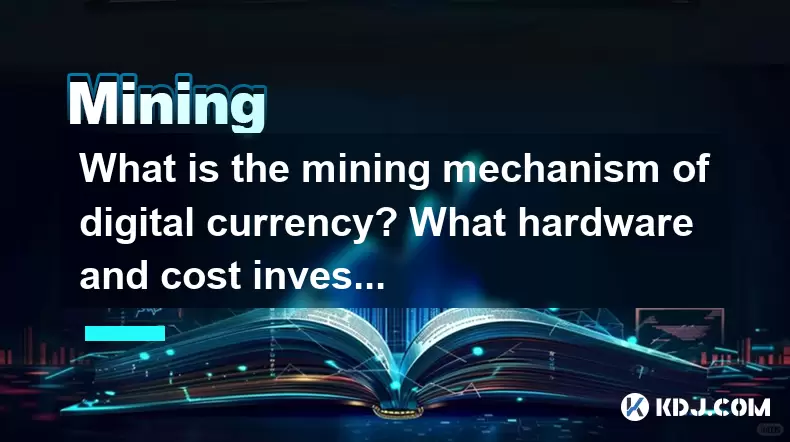
What is the mining mechanism of digital currency? What hardware and cost investment are required?
Jun 23,2025 at 06:29am
Understanding the Mining Mechanism of Digital CurrencyThe mining mechanism of digital currency is a foundational process that ensures transaction validation and network security. In most Proof-of-Work (PoW) cryptocurrencies like Bitcoin, miners compete to solve complex mathematical puzzles using computational power. The first miner to find a valid solut...
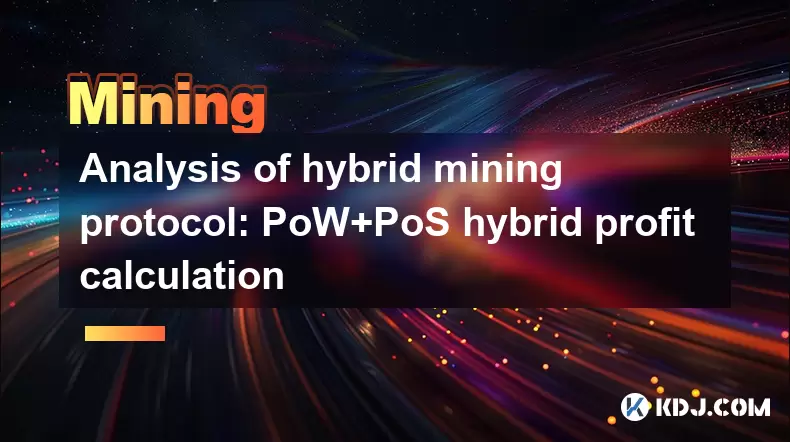
Analysis of hybrid mining protocol: PoW+PoS hybrid profit calculation
Jun 23,2025 at 10:15am
Understanding Hybrid Mining ProtocolsIn the realm of blockchain technology, consensus mechanisms are pivotal in maintaining network integrity and transaction validation. A hybrid mining protocol combines two or more consensus algorithms to achieve a balance between security, decentralization, and energy efficiency. The most commonly adopted hybrid model...
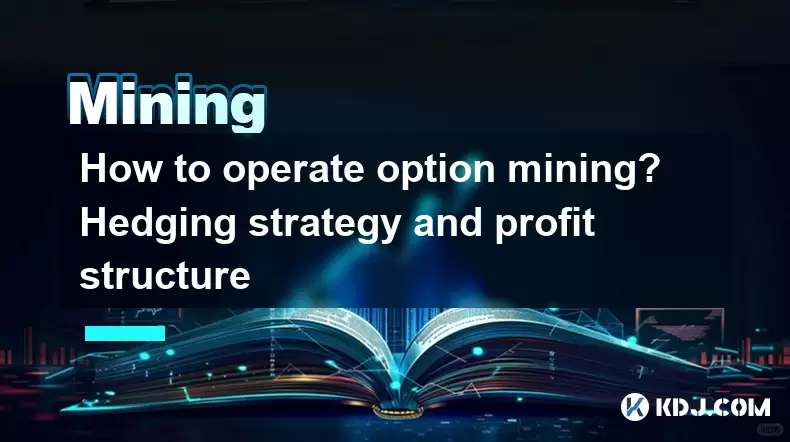
How to operate option mining? Hedging strategy and profit structure
Jun 21,2025 at 03:29pm
What is Option Mining?Option mining refers to a decentralized finance (DeFi) strategy where participants provide liquidity or take specific derivative positions in options protocols to earn rewards. Unlike traditional yield farming, option mining often involves liquidity provision for options markets, allowing users to generate returns through premiums ...
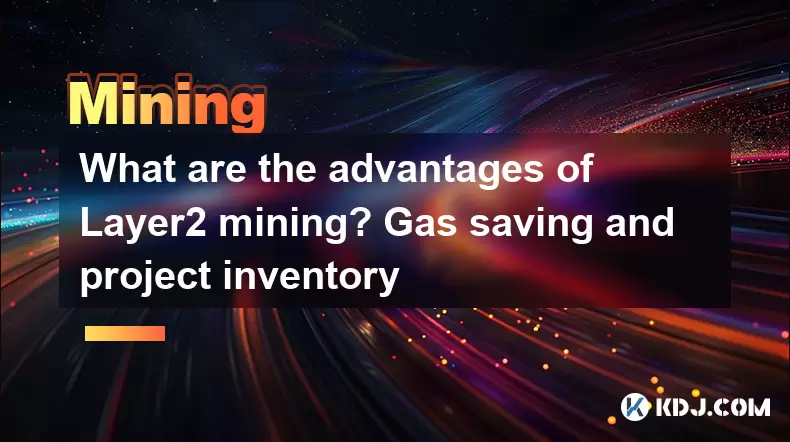
What are the advantages of Layer2 mining? Gas saving and project inventory
Jun 20,2025 at 04:50am
Understanding Layer2 Mining and Its SignificanceLayer2 mining refers to the process of participating in decentralized applications or protocols that operate on top of a primary blockchain (such as Ethereum) using scaling solutions like Optimism, Arbitrum, or zkSync. Unlike traditional mining on Layer1 blockchains, which often involves high computational...

Is contract mining safe? Key points of smart auditing and vulnerability prevention
Jun 19,2025 at 08:08pm
Understanding Contract Mining in the Cryptocurrency SpaceContract mining refers to a method within blockchain ecosystems where users can participate in mining operations through smart contracts. Unlike traditional mining, which requires physical hardware and technical expertise, contract mining allows participants to invest funds into a mining pool or p...

What is liquidity mining in DeFi? How to participate and calculate the income?
Jun 20,2025 at 03:21pm
Understanding Liquidity Mining in DeFiLiquidity mining is a core concept in the decentralized finance (DeFi) ecosystem that allows users to earn rewards by providing liquidity to decentralized exchanges (DEXs) or lending platforms. In traditional finance, liquidity providers are usually institutional players, but DeFi democratizes this process, enabling...

What is the mining mechanism of digital currency? What hardware and cost investment are required?
Jun 23,2025 at 06:29am
Understanding the Mining Mechanism of Digital CurrencyThe mining mechanism of digital currency is a foundational process that ensures transaction validation and network security. In most Proof-of-Work (PoW) cryptocurrencies like Bitcoin, miners compete to solve complex mathematical puzzles using computational power. The first miner to find a valid solut...

Analysis of hybrid mining protocol: PoW+PoS hybrid profit calculation
Jun 23,2025 at 10:15am
Understanding Hybrid Mining ProtocolsIn the realm of blockchain technology, consensus mechanisms are pivotal in maintaining network integrity and transaction validation. A hybrid mining protocol combines two or more consensus algorithms to achieve a balance between security, decentralization, and energy efficiency. The most commonly adopted hybrid model...

How to operate option mining? Hedging strategy and profit structure
Jun 21,2025 at 03:29pm
What is Option Mining?Option mining refers to a decentralized finance (DeFi) strategy where participants provide liquidity or take specific derivative positions in options protocols to earn rewards. Unlike traditional yield farming, option mining often involves liquidity provision for options markets, allowing users to generate returns through premiums ...

What are the advantages of Layer2 mining? Gas saving and project inventory
Jun 20,2025 at 04:50am
Understanding Layer2 Mining and Its SignificanceLayer2 mining refers to the process of participating in decentralized applications or protocols that operate on top of a primary blockchain (such as Ethereum) using scaling solutions like Optimism, Arbitrum, or zkSync. Unlike traditional mining on Layer1 blockchains, which often involves high computational...

Is contract mining safe? Key points of smart auditing and vulnerability prevention
Jun 19,2025 at 08:08pm
Understanding Contract Mining in the Cryptocurrency SpaceContract mining refers to a method within blockchain ecosystems where users can participate in mining operations through smart contracts. Unlike traditional mining, which requires physical hardware and technical expertise, contract mining allows participants to invest funds into a mining pool or p...
See all articles

























































































